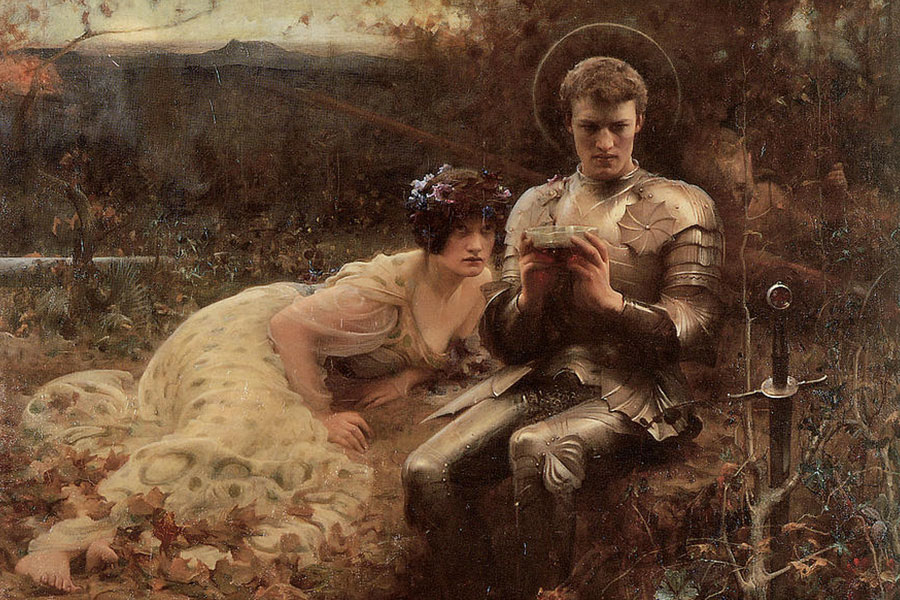Introduction
Let us talk about the Templar knights; let us converse a little bit about these loyal custodians of the Holy Grail. May the gods listen to us, may the Muses inspire us.
What could we say about the Castle of Monsalvat? Let us all sing the hymn of the Grail.
Hymn of the Grail
O feast of love undying, from day to day renewed, draw near, as for the last time, to taste this sacred food. Who revels in good deeds this holy feast still feeds: he dares approach the shrine to share this gift divine.
For sins of the world with thousand sorrows His sacred blood He offered; to the world’s Redeemer with joyful heart, oh, how gladly my blood I proffer: He died, for sin atoning thus, He lives, by death He lives in us!
In faith and love, behold the dove, the Savior’s shining token: take ye the wine, His blood divine, and bread of life here broken!
Parsifal
Much has been written in life; yet, it is necessary to delve profoundly…
Let us now, with great prudence, unveil Parsifal, the culminating work of Wagner. May the Gods assist us..!
The Muses know very well that among the Wagnerian dramas, this diamantine work of this great Master is something special and exceptional.
In this opera, the word of this Master delectably flows as a river of gold runs through the dense, sunny jungle.
What Goethe stated about his second Faust also can be stated about Parsifal, namely:
“I have accumulated in it many mysteries and enigmatic problems, which the future generations will occupy themselves in deciphering.”
The Knights of the Holy Grail
Let us now enter onto the stage: we may and must locate the place of action in the ineffable septentrional bluish mountains, in gothic Spain…
It is unquestionable that Wagner sees precisely here and not in any other place the domains and castle of Monsalvat, which is occupied by the sublime Knight Templars, terrific custodians of the Holy Grail.
The law of contrasts is found written with characters of fire in the great book of Nature. It is obvious that the limit of light is darkness. Thus, the shadow of any sanctuary of glory is always a tenebrous den.
Hence, in no way is it strange that also around there, upon the meridian slope of the same mountains that looks towards Arabian Spain, is found the enchanted castle of the necromancer Klingsor…
The Chalice and the Lance
Amidst the joyful singing of the birds, the daybreak has dawned, a delight of rosy blushing fingers.
The ancient sage Gurnemanz, accompanied by two youthful squires, lies profoundly asleep under the enchanted shadow of a leafy, taciturn tree…
From the very ancient and ancestral side of the Grail’s castle, a solemn reveille on trombones powerfully sounds, that with its formidable notes victoriously greets the dawn…
Listening to the glorious and triumphant hymn, the elder Gurnemanz and his two squires, filled with infinite veneration, humbly kneel and pray with profound reverence.
When arriving to the sublime part of this present chapter, it is important to remember that beautiful poem of Don Ramon del Valle Inclan:
Klingsor, the Black Magician
Legends state that yonder, in a luxuriant corner of a warm valley, very close to the sacred land of the Muslims, the evil magician Klingsor made his dwelling in terrible solitude…
“Certainly, I knew not,” said the old Titurel, “what sin he there committed; he sought atonement for it; yes, holy he would be!”
He was a mistakenly sincere one filled with good intentions, unable to kill the sinful, raging lust within himself. In his hand he held an assassin’s dagger. Thus, frightfully, he castrated, emasculated, mutilated himself.
The merciful hero Titurel, who knew Klingsor and his tenebrous arts very well, stated that then, the wretched, evil, penitent one outstretched his bloody, supplicating hands to obtain the Grail for which he yearned. Yet, it is obvious that he was scornfully spurned by its Guardian.
Page 1 of 4
 English
English




